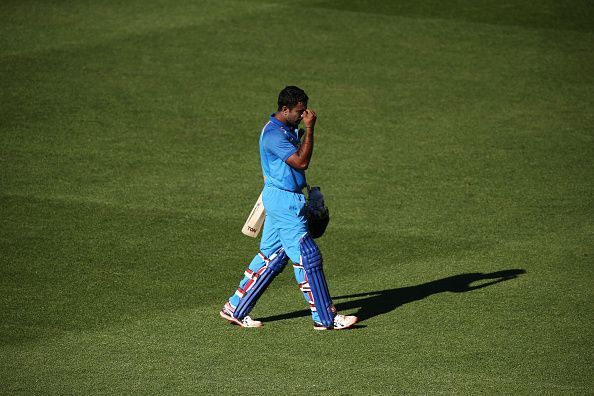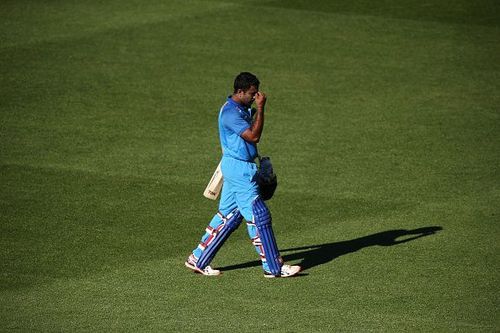
The great conundrum of the Indian middle-order

With the 2019 World Cup scheduled to begin in around two and a half months, teams are striving to find their best 15 for the tournament. Keeping in mind the conditions in England, teams have to make sure that they have all or the majority of the bases covered.
Talking about India, they have performed exceptionally well since the Champions Trophy in 2017. They have won ODI series everywhere barring England and they have certainly dominated in most of those games and the two major reasons of India's performance have been the consistency of the top three batters and the emergence of the two wrist spinners.
But, there is another side to the story and that is the lack of support from the middle and the lower middle-order. The problem is not only the number four position but also number five, six and seven. Players like Ambati Rayudu, Manish Pandey, Suresh Raina and others have been tried at number four with none of them really cementing their place in the side.
Although Rayudu has been backed by the team management and he has been given the longest run for that position, he too has probably not shown the consistency that the management was looking from him.
Decoding Rayudu's batting: One major drawback in Rayudu's batting has been his inability to rotate the strike through the middle-overs. He tends to eat up a lot of deliveries with the dot ball percentage being alarmingly high and because of that, the pressure keeps on mounting and after a string of four or five dot balls, all of a sudden, he tries to hit a six.
Against the faster bowlers, the case becomes worse which is due to his stance. He stays pretty much leg side of the ball, trying to hit everything on the off-side. In a way, he is limiting himself to score on the leg side and this is what the genuine quicks have been using against Rayudu.
They hit the sort of length on the middle and leg stump at a very brisk pace to which all Rayudu does is dead bats towards the bowler. His career strike-rate of below 80 provides evidence of that.
Now at number 5 and 6, we have Dhoni and Jadhav. When it comes to Dhoni, there is always that emotional connection with the great man. A player like Dhoni might win you matches when the target is 250-275 when you don't have the pressure of the run-rate (which we saw during the Australian series) but he might not be the player you would put the bet on to win you games where you are asked to chase 340.
Unfortunately, the team management has no option but to continue with Dhoni since Rishabh pant has not got enough opportunities. Kedar Jadhav, off late, has been more famous for his bowling technique rather than his batting prowess. Jadhav, again, is a very good player of spin bowling but struggles against top quality fast bowling.
Assuming, in a big match in the World Cup you are chasing 330, which would most likely be the case considering the conditions in England, and the team loses Rohit and Virat, do the players mentioned above ha the backing to chase the total against a top-quality bowling attack say against the likes of Starc, Cummins Wood, Rabada?
One can't always play out 10 overs of them when the required run-rate is climbing. Sometimes, chances have to be taken against the best bowlers. One wonders if they can do it without the support of the top order. Virat Kohli and Rohit Sharma can't win matches every time when a big target is being chased. The Champions Trophy final is the most prominent example of that.
In today's game, one has to have impact players in their team and that is why the role of Hardik Pandya is immense. Number 4, 5 and 6 are not the impact players in the batting department and the team management have only themselves to blame.
A player like KL Rahul should be a regular in white-ball cricket, and should not be left out because of a few players. Perhaps, Rohit Sharma would not have been the player he is today if he did not get the number of chances that he ended up getting.